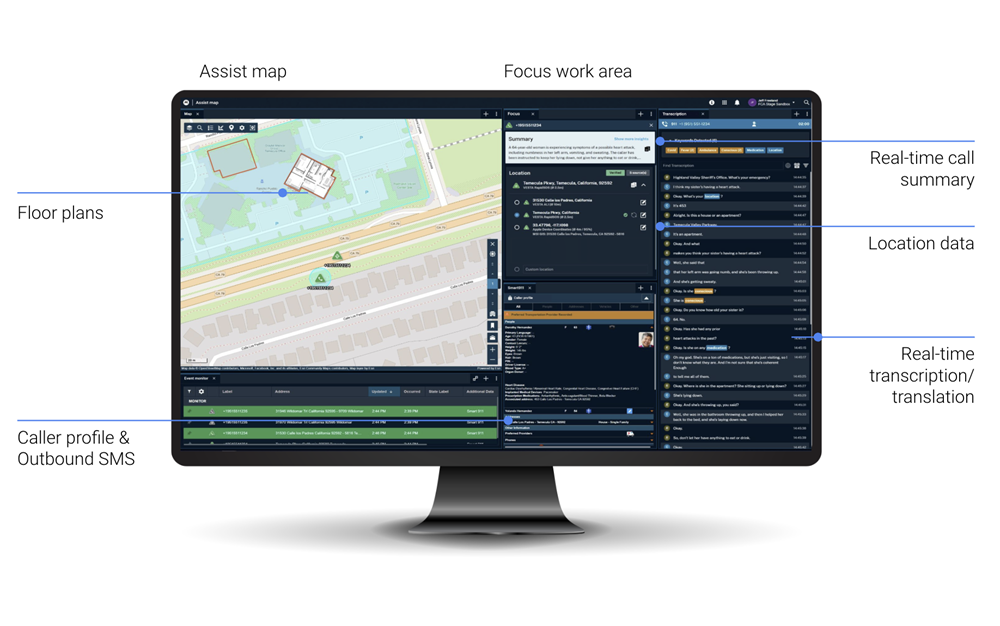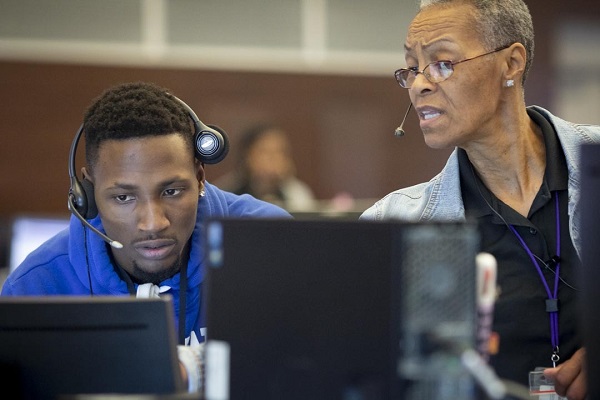Telecommunicators must make rapid decisions from the moment a 9-1-1 call is received, piecing together information from multiple sources on different systems. The stress and mental fatigue they experience is difficult to grasp for those of us who aren’t or have not been in the chair. This raises the question – how do we make the job easier for telecommunicators?
JC Meyer, ENP, Manager, Network and Security, at Lee County, FL, and the Lee County call takers are helping us answer that question. They are the first PSAP in the nation using Motorola Solutions’ 9-1-1 Assist, a comprehensive set of enhanced call handling tools to make answering 9-1-1 calls more efficient and less stressful for telecommunicators.
9-1-1 Assist is a cloud service that integrates call handling, mapping, transcription, location data, caller and facility data and alerts onto a single platform. Assist AI technology from Motorola Solutions reviews this data to suggest options and choices to speed up the call process. The Assist AI augments the support, critical thinking and communication skills of the telecommunicator, while leaving the human in charge.
Being the first agency to work with 9-1-1 Assist, Lee County is helping to make the toolset even more effective for other PSAPs by exposing the AI to additional call data. As an example, let’s review a typical call scenario that Lee County sees, with circumstances that actually occurred during this rollout process.
9-1-1, what’s the location of your emergency?
A 9-1-1 call comes in. The caller is upset because her mother needs medical attention. The caller is speaking so fast that it’s difficult to understand and retain everything she says. The telecommunicator has to repeat questions during the call to make sure she is understanding what the caller is saying.
When a telecommunicator receives a similar call with 9-1-1 Assist, there are several tools that make the call experience easier for the PSAP and the caller.
First, transcription of the call occurs in real-time, helping to clarify the rapid speech of the caller. The call taker sees the transcription come across the screen, word by word. In addition, a summary of the call is generated and updated as the call progresses. Keywords that identify the nature of the call are highlighted and presented at the top of the transcription for fast navigation to that term with a single click.
A foundational element of 9-1-1 Assist is the searchable text transcript and real-time summary of the 9-1-1 call, which can be shared with dispatch and first responders. The transcription and summary provide details that could be overlooked or forgotten.
“The transcription alone is helpful,” says JC, “because the call taker has a way to verify what was said without having to keep questioning the caller. We are saving time and reducing stress on the call taker and the caller.”
In addition to the transcription, the Assist AI collects data on the different possible locations and displays them in a central “Focus” work area, making it easy for the telecommunicator to validate the preferred location of the emergency.
In a real-world example of the call we are describing, three possible locations were presented to the telecommunicator. Two were plotted near each other on the map – the ALI and RapidSOS locations – and a third was the address spoken by the caller, which the AI extracted from the transcription.
9-1-1 Assist

The AI highlighted a mismatch prompting the telecommunicator to verify the address of the emergency with the caller. As JC explains, “The woman was calling from her house so the ALI location was correct, as was the RapidSOS location. But the problem was that she was calling on behalf of her mother who lived 10 miles away. That address was pulled from the transcription and it was the correct location. Having the location data brought into one place is a big deal. With every call, address verification should happen before it goes to CAD so the PSAP knows it is sending the correct location every time.”
With 9-1-1 Assist, AI automatically gathers, sorts and surfaces information from the live call, helping the telecommunicator make the most informed decisions quickly and spot potential issues. As a result, the telecommunicator has fewer clicks, fewer tabs, less digging for information, and they can be more present for the caller in their moment of need.
Are we making the job easier for telecommunicators?
“We are talking about improvements for the call taker,” confirms JC. “Each improvement automates a routine task from verifying what the caller said, to pulling keywords that need attention, to providing a summary of the call. And with having all the locations in one place, now all the call taker has to do is click which is the correct location. You’re not having to look for everything. It’s all right there. This is a huge win for call takers.”
Learn more about 9-1-1 Assist.
For more information on Motorola Solutions NG9-1-1 solutions and services, visit us at: www.motorolasolutions.com/ng911
Stay in the know
To learn about other technology successes from your colleagues, sign up for our newsletter.




